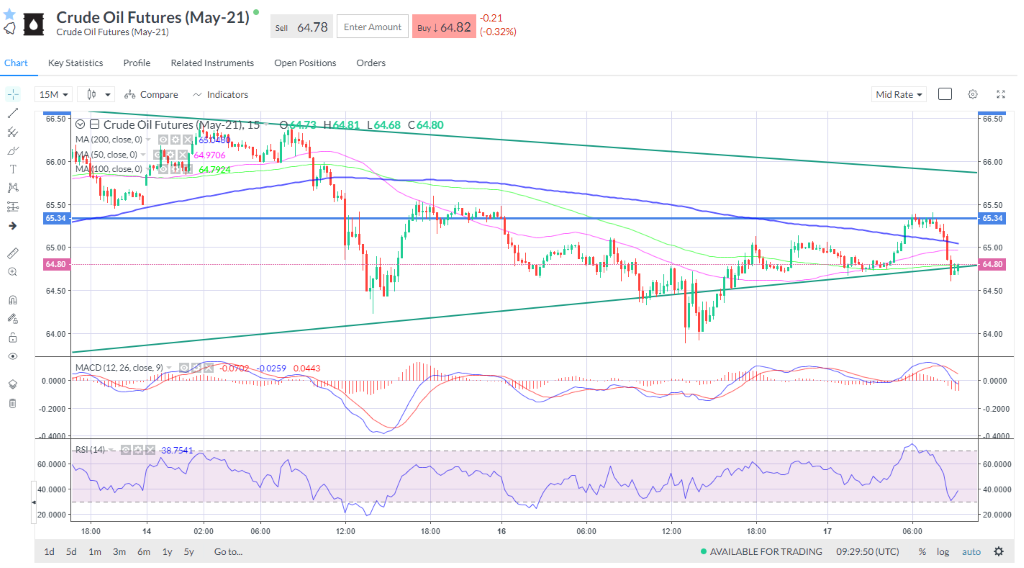
Wednesday Mar 17 2021 09:50

3 min
Oil prices declined a touch after the International Energy Agency warned against oil entering a supercycle as the market remains well supplied despite the decline from last year’s overhang. This somewhat goes against the recent narrative that has focused on an increasingly tight market, so will be one to watch to see if sentiment plays out to the upside as the Fed meets and the broad reflation trade encounters doubts.
“Oil’s sharp rally to near $70/bbl has spurred talk of a new super-cycle and a looming supply shortfall,” the IEA said. “Our data and analysis suggest otherwise.”
In its monthly report the agency noted that by the end of January, OECD industry stocks, were still 110m barrels higher than a year ago, although only around 63m barrels above the 5-year average. On top of this cushion, there “a hefty amount of spare production capacity has built up as a result of OPEC+ supply curbs”. The IEA seems to say that OPEC supply restraint means any shortfall due to higher demand can be easily turned back on.
However, we could still oil prices move higher from current levels as demand grows and inventories are drawn down.
Global oil demand is forecast to grow by 5.5 mb/d to 96.5m b/d, recovering around 60% of the volume lost in 2020. Oil demand will return to 2019 levels by 2023
The IEA notes that “stronger demand and continued OPEC+ production restraint point to a sharp decline in inventories during the second half of the year”. But it cautions that there is “more than enough” oil in storage to keep global oil markets adequately supplied.
Having traded firmly above $65 in the wake of the API crude draw on Tuesday, WTI (May) seemingly retreated on the IEA report to test $64.60.

